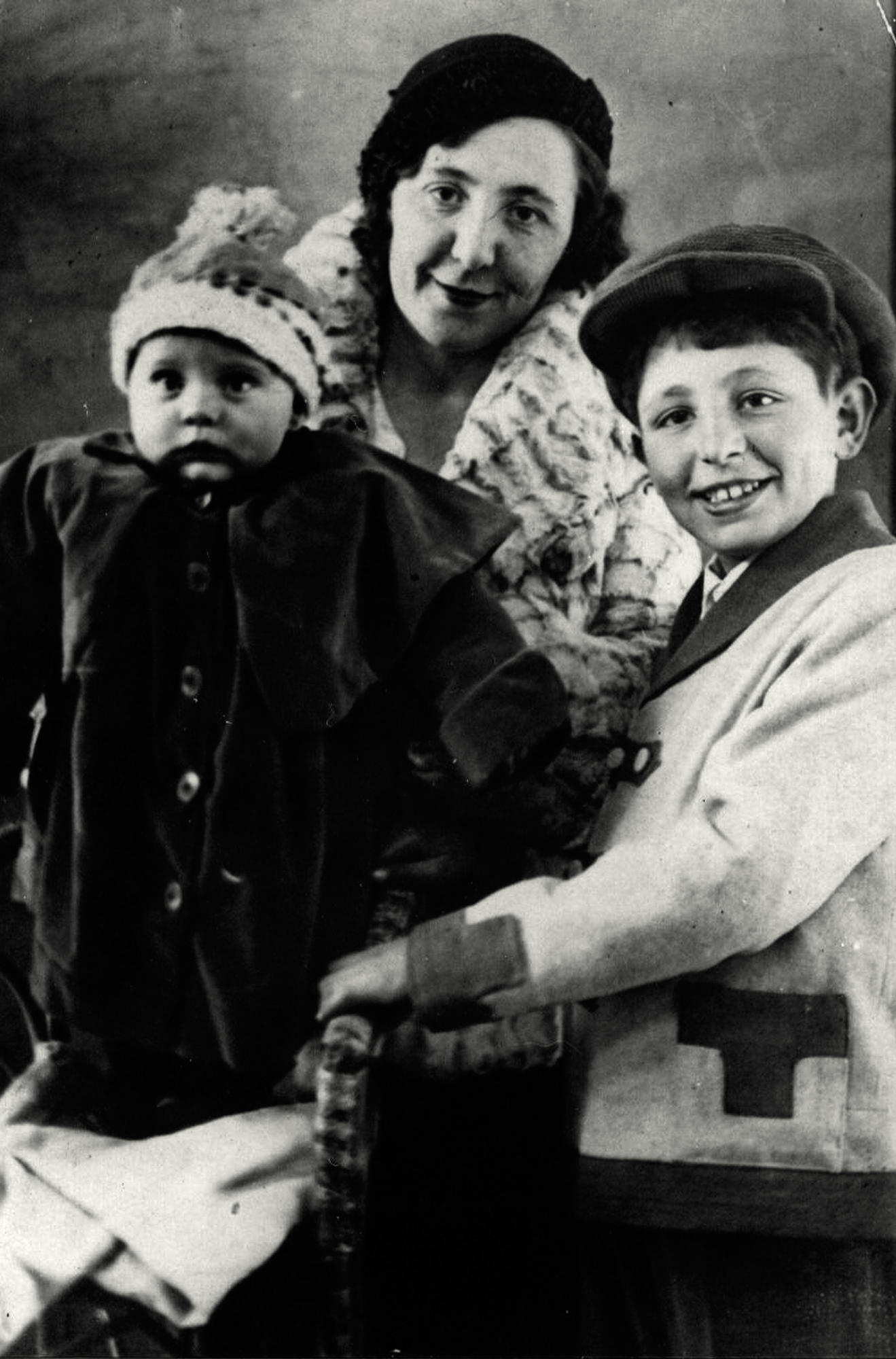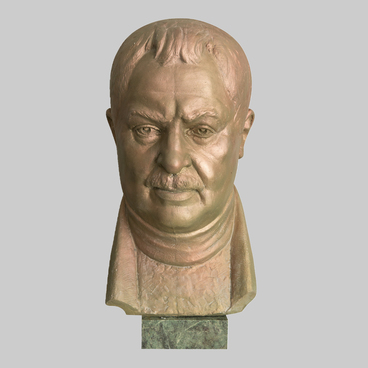The photocopy was taken from a digitized image. It was provided by Mikhail Petrov in 2013, who was the official representative of Ernst Neizvestny in Russia at that time. The gift was presented on the eve of the opening of the great sculptor’s museum.
The original picture from which the copy was made, is located in New York, in the personal archive of Ernst Neizvestny’s widow— Anne Graham.
In this picture we can see the eleven-year-old future sculptor, his little sister — Lyudmila and their mother — Bella Dijur.
It is interesting that according to the documents, before the war Neizvestny had another name - Eric. His parents admired Anna Akhmatova’s works so they named their son in honor of one of the characters of her poem. The future sculptor decided to change his name, choosing the most “adult” option - Ernst. It was under that name that the boy from the little town in the Urals would become well-known in the international community.
Ernst was born in a family of intellectuals. His father, Iosef Moiseevich Neizvestny (1898 —1979), was a popular pediatric otorhinolaryngologist in Sverdlovsk.
His mother, Bella Abramovna Dijur, was born in Ukraine, in the city of Cherkassy. She spent her childhood in Sverdlovsk, where her parents moved to in the middle of the Russian Civil War. She received higher education in Leningrad, graduated from the Leningrad State Pedagogical Institute, the Department of Chemistry and Biology. Her house was always open to interesting people, so the children absorbed the spirit of freedom.
Being a creative person, she wrote some wonderful popular science books for children and adolescents. She was accepted into the Union of Soviet Writers owing to the recommendation of Pavel Bazhov, Marietta Shaginyan and Agniya Barto in 1940. She was a unique poet with her own outlook on life. Her poetic legacy was published only in the USA, where she emigrated to after her husband’s death in the late 80s, in order to be with her son and his family.
It is not surprising that some imageries from the poems of Bella Dijur are reflected in the sculptures of her son. Crucifixion became one of such bright symbols. She wrote a parable in verse about the choice of the life cross.
Bella Dijur had very wide interests. She was keen not only on literature, but she was also well versed in Theosophy and inclined to Tibetan mysticism.
Ernst was always very attached to his mother throughout his life. They had similar views on most important matters — they never betrayed their creativity, remained true to moral principles. ‘I could only become such a person with a mother like mine. It was from her that I absorbed democracy and liberalism’, Ernst Neizvestny said in one of his interviews.
Bella Dijur died in 2006 and was buried in New York at the famous cemetery Beth-EL. In Yekaterinburg, a memorial plaque was installed in her honor.
Lyudmila Neizvestnaya is Ernst’s younger sister. She devoted her life to pedagogy, children’s psychology. She emigrated to the United States in the late 80s.
The original picture from which the copy was made, is located in New York, in the personal archive of Ernst Neizvestny’s widow— Anne Graham.
In this picture we can see the eleven-year-old future sculptor, his little sister — Lyudmila and their mother — Bella Dijur.
It is interesting that according to the documents, before the war Neizvestny had another name - Eric. His parents admired Anna Akhmatova’s works so they named their son in honor of one of the characters of her poem. The future sculptor decided to change his name, choosing the most “adult” option - Ernst. It was under that name that the boy from the little town in the Urals would become well-known in the international community.
Ernst was born in a family of intellectuals. His father, Iosef Moiseevich Neizvestny (1898 —1979), was a popular pediatric otorhinolaryngologist in Sverdlovsk.
His mother, Bella Abramovna Dijur, was born in Ukraine, in the city of Cherkassy. She spent her childhood in Sverdlovsk, where her parents moved to in the middle of the Russian Civil War. She received higher education in Leningrad, graduated from the Leningrad State Pedagogical Institute, the Department of Chemistry and Biology. Her house was always open to interesting people, so the children absorbed the spirit of freedom.
Being a creative person, she wrote some wonderful popular science books for children and adolescents. She was accepted into the Union of Soviet Writers owing to the recommendation of Pavel Bazhov, Marietta Shaginyan and Agniya Barto in 1940. She was a unique poet with her own outlook on life. Her poetic legacy was published only in the USA, where she emigrated to after her husband’s death in the late 80s, in order to be with her son and his family.
It is not surprising that some imageries from the poems of Bella Dijur are reflected in the sculptures of her son. Crucifixion became one of such bright symbols. She wrote a parable in verse about the choice of the life cross.
Bella Dijur had very wide interests. She was keen not only on literature, but she was also well versed in Theosophy and inclined to Tibetan mysticism.
Ernst was always very attached to his mother throughout his life. They had similar views on most important matters — they never betrayed their creativity, remained true to moral principles. ‘I could only become such a person with a mother like mine. It was from her that I absorbed democracy and liberalism’, Ernst Neizvestny said in one of his interviews.
Bella Dijur died in 2006 and was buried in New York at the famous cemetery Beth-EL. In Yekaterinburg, a memorial plaque was installed in her honor.
Lyudmila Neizvestnaya is Ernst’s younger sister. She devoted her life to pedagogy, children’s psychology. She emigrated to the United States in the late 80s.


